|
– Part 3: Technical Specs and Special Features –
Oh what an absolute treat this is. Maria Marten, or The Murder in the Red Barn, Sweeney Todd: The Demon Barber of Fleet Street, The Crimes of Stephen Hawke, It's Never Too Late to Mend and Crimes at the Dark House have all been newly restored from 4K scans of the original nitrate negatives by Powerhouse Films. Sexton Blake and the Hooded Terror has been newly restored from a 4K scan of a 35mm dupe positive, also by Powerhouse Films. The Face at the Window has been transferred from a 2020 restoration from a 4K scan of the original nitrate negative. The results, for those of us who had only previously seen any of Slaughter's films in iffy TV transfers of ropey prints, is little short of miraculous. The image is now stable in frame, the contrast attractively graded, the sharpness and level of detail often of a very high order, a fine film grain is visible on every transfer, and they are clean of dust and dirt and display only the faintest trace of any former wear. Never could I have imagined seeing these films looking this good.
Within those parameters, there is some small variance. Maria Marten does have the odd shot that's a little softer than the rest, and a small jump-cut at one point suggests a few missing frames, but otherwise it looks splendid. Sweeney Todd also looks great, though the image is just a whisper less crisp than Maria Marten, but not enough to be in any way detrimental. The best material on The Crimes of Stephen Hawke looks really good, but there are some remaining signs of wear here in the shape of some occasional faint flickering, some minor frame instability in places, and a small instance of visible damage on one scene. Otherwise, terrific. The contrast is a wee bit gentler on It's Never Too Late to Mend, but again, the best shots are in spanking shape. Conversely, the contrast on The Ticket of Leave Man is attractively punchy, with solid black levels and robustly rendered picture detail, though it does soften a whisper on a couple of shots. Although the only transfer here not sourced from the nitrate negative, Sexton Blake and the Hooded Terror once again generally looks top-notch, despite a few very thin scratches here and there, and a small number of shots where the contrast flickers a little and the grain is more pronounced. The contrast is at its strongest on The Face at the Window, with black levels beefy enough to suck in fine detail on black clothing, but the image is otherwise crisp and in impressive shape. Finally, we have Crimes at the Dark House, which has no obvious flaws and looks grand.
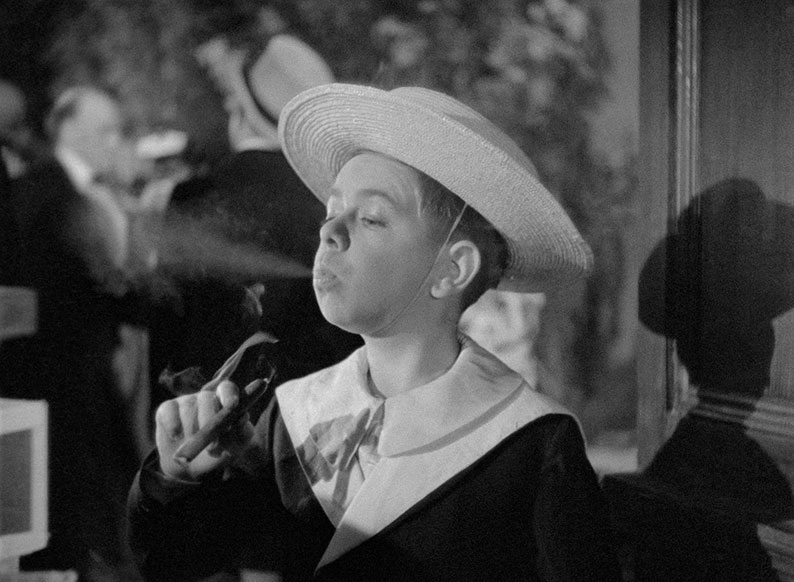
All of the mono soundtracks are presented in Linear PCM 1.0, and all have an inevitably narrow tonal range and lack the finesse of more modern studio films, which is par for the course for works of this age. Dialogue is always clear, and while the scores can sound a little tinny at times, some of the title screen music is in better shape than I would have expected. Being the oldest films in this set, I can't say I was completely surprised (or that worried, to be honest) by the presence of some audible hiss and fluff on Maria Marten and Sweeney Todd, with the hiss growing temporarily louder on some scenes in the latter movie. While a faint level of hiss is also detectable on The Crimes of Stephen Hawke, it's less pronounced than on its predecessors, and effectively absent from Its Never Too Late to Mend. Fluff makes a comeback on The Ticket of Leave Man, though not distractingly so, and is traded in for a very faint hum on Sexton Blake and the Hooded Terror. Again, this is just me being picky and will likely go largely unnoticed by most. Faint traces of hiss and fluff on A Face at the Window and Crimes at the Dark House are just about detectable. No other signs of wear or damage were evident, and for the most part, these tracks are fine.
Optional English subtitles have been provided for all the films, and some of the key special features.
DISC 1
Audio Commentary on 'Maria Marten, or The Murder in the Red Barn' with Josephine Botting and Vic Pratt
"Oh wow, what a film," says film historian Vic Pratt enthusiastically as he and archival curator Josephine Botting begin an enjoyable and detailed examination of a work they clearly both have a real affection for. Not having seen the film since I was an impressionable teenager, it was news to me that it was based on a real murder committed in 1828. Having learned that, I was genuinely surprised that the names of the victim and her killer had not been changed for the film or the play on which it was based, and even more so by the revelation that the first stage adaptation appeared shortly after the murder took place. Too soon, do you think? We get information on the actors and filmmakers, the previous stage and screen adaptations, what happened to the real Corder both before and after his death, and shots that were removed at the censor's behest from the final scene. They praise Milton Rosmer's direction, the creepily atmospheric murder scene, and especially Slaughter, whom Pratt describes at one point as, "the most brilliant, brilliant thing in this film," and whose expressive, larger-than-life acting style he later likens to a visual cartoon.
Audio Commentary on 'Sweeney Todd: The Demon Barber of Fleet Street' with Stephen Jones and Kim Newman
Writer and editor Stephen Jones and novelist and critic Kim Newman – something of a genre commentary dream team for me – kick off by praising the restorations carried out on the films in this set, as well they might, with Newman rightly noting that previously available prints were "public domain eyesores." They explore the origin of the urban legend of Sweeney Todd and the Penny Dreadful series that gave it birth, Jones makes a case for Slaughter as Britain's greatest horror actor, and the two men discuss why he is not more widely celebrated than he is. They praise the performance of young Johnny Singer as Tobias, George King's direction, the background detail in the dock scene, and the women who stand up to Slaughter's always devilish characters. They explore the various stage and screen adaptations of the tale, provide details on the actors and the director, and note that Slaughter's signature chuckle could be put to genuinely disturbing use. As ever with these two, this is just a sampling.
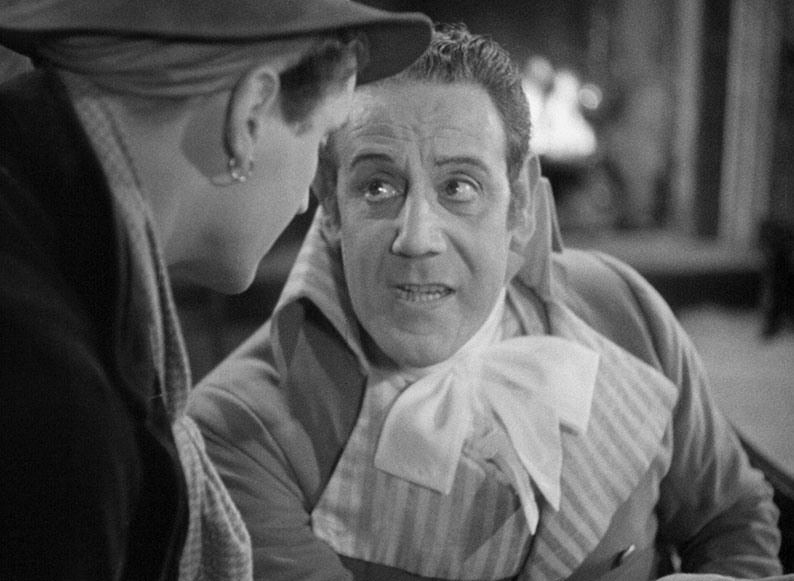
Ania Goszczyńska and David Tibet: A Long Shadow (10:23)
Artist and illustrator Ania Goszczyńska and founding member of experimental music group Current 93 David Tibet share their obsession with the Red Barn murder and Tod Slaughter, and when I say obsession, I mean it. Not only have they collected a range of books relating to the story, they own a large metal latch that is the last remaining piece of the original Red Barn. They also display an actual newspaper from the period in which the execution of Corder was a front-page story, and another that was signed by Corder's jailer, the case judge, the court entry man (whatever that may be), and the surgeon who performed Corder's autopsy. They outline how they became fascinated by Slaughter, whom Tibet describes rather wonderfully as being "like an evil thunderbolt in our hearts," and reveal that they have a picture of him above their bed, so that he's the last thing they see at night and the first thing they see when they wake each day. Many of the items in their extensive collection of memorabilia are featured in the various galleries in this set.
'Maria Marten, or The Murder in the Red Barn' original audio play (13:07)
A tightly condensed version of the stage play, performed by Tod Slaughter and Company, that breaks the story down to its essentials in order to fit onto the 78rpm record on which it was distributed, and from which this recording was sourced. Narrative gaps are filled by having Corder share his thoughts and intentions with the audience, and in an interesting twist that's not in the film, Carlos joins the Bow Street Runners and is the one who arrests Corder for the murder. I really enjoyed this.
'Maria Marten, or The Murder in the Red Barn' audio play with alternative score by Current 93 (12:32)
This presents the above play but with an alternative score by Current 93. It's nice to have the option, but as a purist I tend to go with the original every time, and it's the same story here. But there's another thing. The music has a mesmerising, minimalist quality that I definitely warmed to, but much like the alternative KTL score on the 2008 Tartan DVD release of Victor Sjöström's The Phantom Carriage, it sometimes lends an overly sinister edge to scenes that are in no need of such musical emphasis. But that's just my opinion. Feel free to disagree and enjoy this unexpected extra.
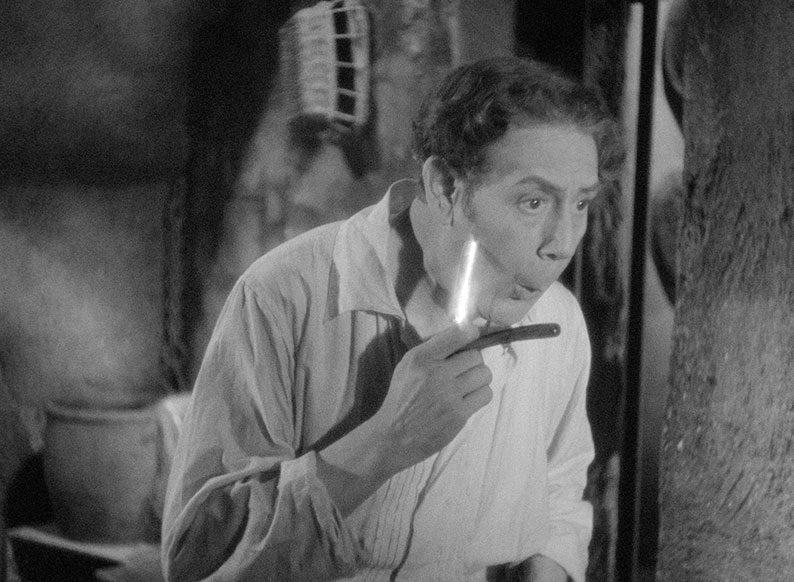
'Sweeney Todd: The Demon Barber of Fleet Street' original audio play (12:28)
Also sourced from a 78rpm record, this compression of the play by Slaughter and company is considerably more gruesome than the film. It's explicit about the content of Mrs. Lovatt's pies, has Todd cut the throat of the workhouse boy whom Tobias replaces, and he does likewise to Mrs. Lovatt before burning her body in her furnace. Slaughter chews the scenery with gusto here, and about third of his lines include a variant on his beloved "polish him/her/them off" catchphrase. Once again, a lot of fun, and a valuable inclusion.
'Sweeney Todd: The Demon Barber of Fleet Street' with alternative score by Current 93 (12:38)
The same play, but with an alternative Current 93 score, one that brings a sinister air to every scene that enhances the horror but dampens the play's sense of macabre fun. For some, this will work well, and I thus salute its inclusion.
'Maria Marten, or The Murder in the Red Barn' image gallery
15 screens containing promotional photos (one of which is signed by Slaughter himself), what looks like 1930s lobby cards, and a colour poster.
'Sweeney Todd: The Demon Barber of Fleet Street' image gallery
A more generous 43 screens featuring monochrome promotional stills, the sketch of Sweeney Todd that the customer asks about in the film's opening scene, some lobby cards, a newspaper ad press page with the individual ads then given their own screens, a poster, and scans of the original budget documents.
Todd Slaughter at Home (1936) (4:07)
Oh, this is an absolute riot. An opening caption claims that newsreel company Pathétone is taking you along to interview "that famous star of melodrama – Tod Slaughter at home." Cut to Slaughter cackling like a madman in wooden-walled barbershop as he strops a straight razor and shows us a couple of the props he used for murder in his first two films. When the Pathétone newsreel cameraman shows up at his abode – which bears the sign "Sweeney Tod Slaughter" – he's dragged inside and invited to sit in a barber's chair, where he's lathered up for a shave and, well, it just keeps on getting madder from there. Hilarious.
Pot of Plots (1938) (3:51)
What I'm guessing was also a newsreel filler, this four-minute short uses split exposure to have Tod Slaughter #1 ask Tod Slaughter #2 to make himself up and perform some of the characters for which he has become famous. This he does in what plays almost as an audition tape, as he acts sequences from East Lynne, Maria Marten and Sweeney Todd.
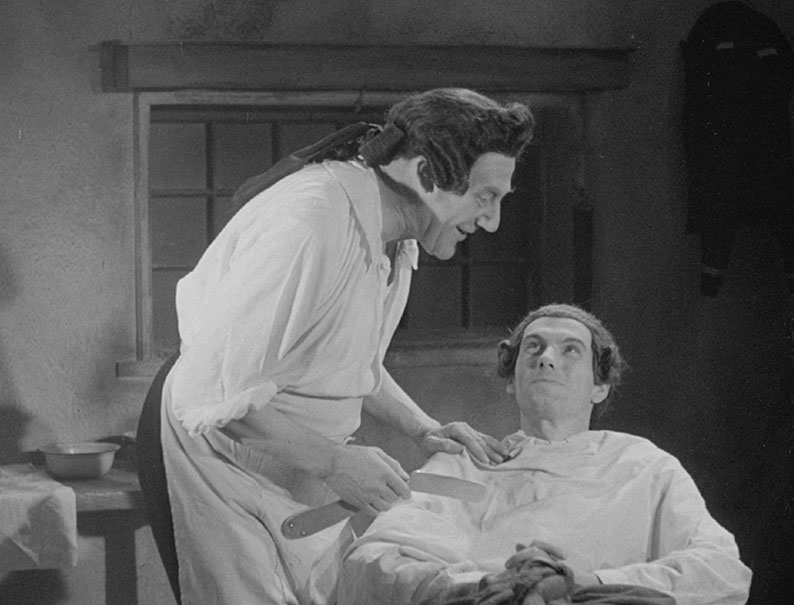
Bothered by a Beard (1946) (35:01)
A Gaumont British Instructional film that looks at the male beard and the evolution of the razor. If this sounds like a dull way to spend more than half-an-hour – and it did to me – there's a good chance you'll be pleasantly surprised by what you get. Written and directed by actor E.V.H. Emmett, it's ambitious in its scope and slick in its execution, staging, shooting, or sourcing material from all around the world to illustrate the range of beards worn by men over the ages. It uncritically acknowledges that both beards and the lack of them are central to some religions, and traces the history of the razor in all of its guises, which includes the terrifying use of broken glass bottles to shave, a claim I've been unable to verify and shudder at the thought of. This is all really just build-up to the invention and development of the safety razor, which dominates the film's second half. It's certainly educational, and very well made, but what makes it entertaining is the wit of the scripted narration and its deadpan documentarian delivery. Rarely is a line not given a dryly humorous edge. "Razors and shaving were known in the bronze age," the narrator informs us, adding without a pause, "about 3,000 years ago last Friday." There are throwaway comments aplenty to treasure, with ancient razors described casually as "face weapons," while the production line at a safety razor factory is peppered with amusing descriptions. "This machine has been grinding an edge, honing it, and giving it its final stropping," we are told, "making the edge the sharpest cutting agent in the world, sharper than a serpent's tooth and ungrateful children." Later, the likely response of a girl to her boyfriend's lacklustre shaving habits is summed up with the line, "And how can a girl stay in love when every time she kisses her sweetheart, it reminds her of the time she fell off her bicycle and hit her face on the gravel?" I enjoyed this immensely, and actually learned a thing or two. It also looks to have been restored and is in generally spanking condition.
Puzzle Corner Number Fourteen (1954) (19:12)
A curious short film, also nicely restored, whose title indicates that it is part of a series. Its purpose is to test the memory, knowledge, and observational skills of the viewer by having the narrator quiz us every ten seconds or so on what's on screen or, I'm guessing, what we remember from Puzzle Corner Number Thirteen. You'll need to be sharp and have a far great level of general knowledge than I am lumbered with to score highly here. That said, I genuinely astonished myself with a blind guess about the length of the Queen Mary liner that was only a foot out. The reason it's in this set is that there's a question on who a fictional character being played on screen by none other than Tod Slaughter is. Here's a clue – he polished them off…
DISC 2
Audio Commentary on 'The Crimes of Stephen Hawke' with David McGillivray and Kim Newman
Kim Newman is back, but is this time teamed with screenwriter, producer and critic David McGillivray, who reminds us that this is the only Slaughter film not based on an existing literary or theatrical property, which goes some way to explaining that radio show prologue. McGillivray hilariously describes the boy who plays the ghastly young Terence as, "the world's worst child actor, who's just about to be killed by Tod Slaughter, and not a moment too soon," and notes that only Slaughter could get away with such a transgressive scene in 1936. Newman chips in here by suggesting that the most shocking aspect of the scene is that we're kind of on Slaughter's side because the kid is so obnoxious. It wasn't just me then. Newman recalls watching these films on 16mm and how well they played to audiences, they both provide details on the actors and cinematographer (and future director) Ronald Neame, and McGillivray shows Newman a book he nicked from the school library that contained the first picture he had of Slaughter. They also discuss the idea of a Tod Slaughter movie biography and speculate on who should play him – that actor they suggest is absolutely spot-on.
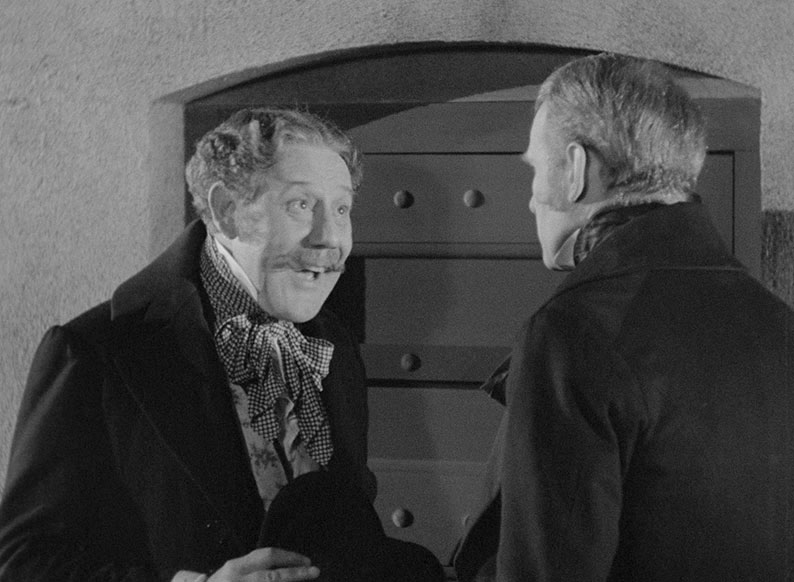
Audio Commentary on 'It's Never Too Late to Mend' with Kevin Lyons and Jonathan Rigby
The first of three commentary tracks in this set by film historians and genre maestros Kevin Lyons and Jonathan Rigby delivers plenty of detailed information on the actors, original novel author Charles Read, the horrors inflicted on inmates of Victorian prisons, other stage and film versions of this story, and more. Oscar Wilde and Charles Dickens are both quoted on prison conditions of the day, and the scene in which the child prisoner is punished with a torture known as 'The Jacket' is described as the most shocking in any Tod Slaughter film. There's praise for Hone Glendinning's cinematography, the quality of the acting in supporting roles, and the way Slaughter seems to relish his cold-hearted villainy. They also point out one of the three times you can just about hear the director shout "action" as one scene dissolves into another, and reveal that the film was positively reviewed. An enjoyable and informative listen, once again.
'The Crimes of Stephen Hawke' Image Gallery
Three promotional stills, two portrait shots of Slaughter (the second is my favourite), and five screens of scans of the original budget documents. Filmmakers of later years will doubtless weep at the comparatively low cost of stock and staff wages.
'The Crimes of Stephen Hawke' Script Treatment Image Gallery
Scans of pages from the original script treatment by Frederick Hayward under the altogether more Tod Slaughtery title of The Horrible Crimes of Stephen Hawke. Two pages of typewritten text are presented per screen, then followed by close-ups of the text for easier reading. Includes the odd handwritten correction in what I can presume were pre-Tipp-ex days.
'It's Never Too Late to Mend' Image Gallery
10 screens of promotional stills, including a posed group shot in which Slaughter is surrounded by what I'm guessing is the crew and some of the cast. It's a sign of the times that I only spotted a single woman in what is otherwise an all-male affair.
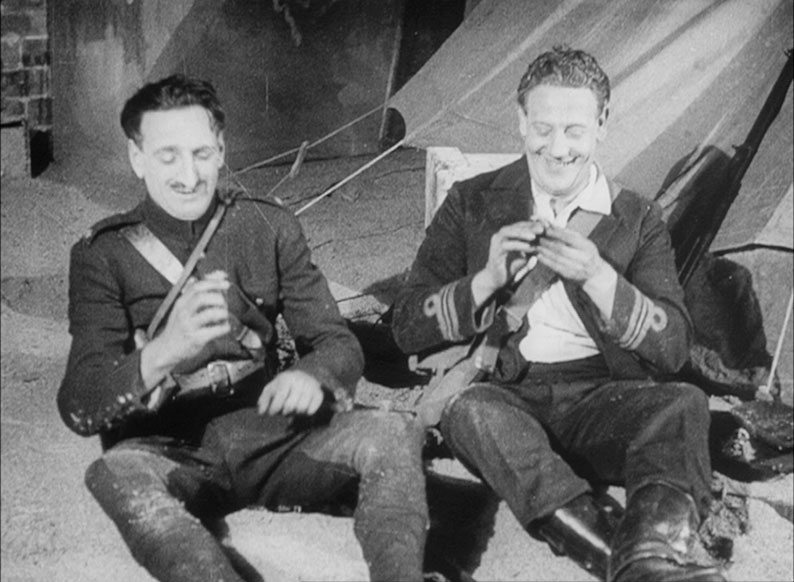
London After Dark (1926) (7:12)
What looks like a newsreel filler piece is hugely valuable for being the first known film footage of Tod Slaughter, as he performs on stage in The Flag Lieutenant at the Elephant and Castle Theatre that was his dramatic home. Can be watched silent or with a new Current 93 score and a couple of added sound effects. Again, I'm split on this. As a musical piece, it's intriguing and wouldn't be out of place in that glorious final season of Twin Peaks. It does feel at odds with the imagery at times, though – as a caption announces the arrival of "those ever-welcome scenes of comedy," the music makes it feel like a sequence from a demonic horror movie.
DISC 3
Audio Commentary on 'Ticket of Leave Man' with Josephine Botting and Dave Thomas
Here, archival curator and film historian Josephine Botting is joined by Dave Thomas, who is co-host of the Due Signori en Giallo podcast (thanks to Jon Dear for clarifying what my old ears failed to pick up). It matters not, as this is yet another information and observation packed commentary that educates and entertains in equal measure. They praise the film's period recreation, handily explain what a bill broker is, provide the expected info on the actors and key filmmakers, and discuss the strong social prejudice that ex-convicts faced at the time. If you're interested in the differences between the film and Tom Taylor's original play then you're in for a treat because there's loads on that, and we're reminded that Taylor is most famous now for authoring Our American Cousin, the play Abraham Lincoln was watching when he was assassinated by John Wilkes Booth.
Audio Commentary on 'Sexton Blake and the Hooded Terror' with Stephen Jones and Kim Newman
Jones and Newman are back for what Jones states up front might not be Slaughter's very best movie but remains his personal favourite, a viewpoint his misses no opportunity to justify, and I absolutely get where he's coming from. It's difficult to list all of the areas covered by this breathlessly busy commentary, as it is absolutely crammed with information and opinion (my notes for this one are the longest by far), and it makes for an enormously enjoyable and informative listen. There's plenty on the character of Sexton Blake, how he came to be modelled partly on Sherlock Holmes, how the villains in his stories influenced the ones that were later pitted against James Bond, and Blake's various film and TV incarnations. On this score, there's plenty of praise for actor David Farrar and two films he made in 1945 in which he played what Newman regards as the finest screen incarnation of Blake. Both men admit that they'd love to have seen Tod Slaughter play Professor Moriarty (oh, count me in!), suggest this film is effectively a Boys' Own adventureaimed primarily at a younger audience, and note that the film is brightened up a lot by Greta Gynt as French Mata Hari, Mademoiselle Julie. There's so much more here.

Giles and Imogen Slaughter: Shock Factor (11:19)
Oh, this is nice. Tod Slaughter's grand-niece Imogen and his nephew Giles share some details of the great man's background. Interesting to hear that he was regarded as the black sheep of the family for pursuing a theatrical career, only for the naysayers to become proud of him when he became famous. They reveal that he was an extraordinarily generous man who threw extravagant parties and always took care of the actors in his troupe, which Giles suspects was key to his later bankruptcy. Imogen even has his original make-up box and takes us through its contents, though I'd love to hear more detail on the story she tells of how it came into her family's possession.
Slaughter's Stock (12:12)
Written, narrated and edited by Michael Brooke, this is a really well assembled and comprehensive look at the actors who appeared in multiple Tod Slaughter films, and those whose star was later to more brightly shine. Particularly effective is the use of split-screen to simultaneously show all of the films in which the actors in question appeared.
'The Ticket of Leave Man' Image Gallery
11 screens of high quality monochrome promotional stills.
'Sexton Blake and the Hooded Terror' Image Gallery
Two production stills and four monochrome posters of the sort you used to find in newspapers and magazines.
DISC 4
Audio Commentary for 'The Face at the Window' with Kevin Lyons and Jonathan Rigby
The final two commentaries in this set are handled by Jonathan Rigby and Kevin Lyons, and as confirmed horror fans, it shouldn't really be surprising that that they regard The Face at the Window as the best film in this set. Once again, the two provide us with details on the production and the Brooke Warren play on which this was based, as a well as the differences between the film and its theatrical source material. Rigby reads from an unexpectedly glowing review of the film by none other than Graham Greene, both praise John Warwick's performance as the hero and the production design in The Blind Rat club, and discuss previous film adaptations of the play. They also reveal that the whole film was shot in just two weeks, and sum up its pleasures by describing it as, "a superb thriller of the old, old, old school."
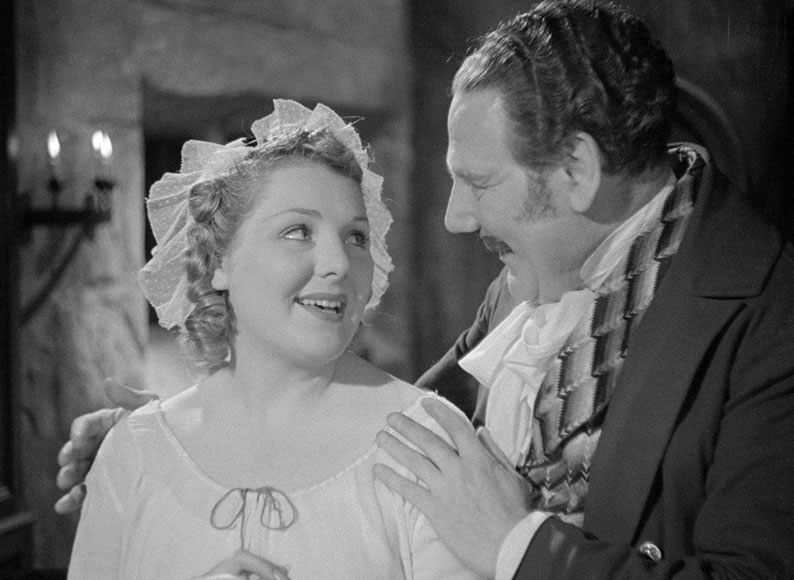
Audio Commentary for 'Crimes at the Dark House' with Kevin Lyons and Jonathan Rigby
Rigby and Lyons are back for the final commentary in this set, and from a couple of their comments I have the feeling this was recorded before the one for A Face at the Window. Not that it matters, as once again this really delivers the goods. There's plenty on Wilkie Collins' classic source novel, The Woman in White, including the differences between the film and the book and other film and TV adaptations. There's plenty of detail on the actors, and the reasons for the lack of a director credit are explained. For the first time in the commentaries in this set, the fact that Slaughter is the star's real surname and not a pseudonym as many believe receives some attention. They note that Slaughter's character really is revolting in this film, comment on the ghastly suspense of the pre-rape sequence, and praise specific actors, series regular Hone Glendinning's cinematography, and the art direction of future Hammer maestro Bernard Robinson. There's just one moment that made me wince. Having written in my review that the opening scenes of A Face at the Window played a little like Tod Slaughter's greatest hits, I was somewhat relieved when Lyons and Rigby didn't say the exact same thing in their commentary on that film. No, they saved that comment for this one, damn their infinitely knowledgeable hides. A fine final commentary in an exemplary set.
Stephen Thrower: Full Blooded (59:06)
Author Stephen Thrower takes a detailed look at the career of Tod Slaughter, with specific focus on the films in this set. This is packed with interesting information and analysis, some of which I've also touched on in my review, and includes biographical details of Slaughter's career and deconstructions of a few key scenes. I came to this after all of the commentary tracks and many other extras, so was already aware of some of what Thrower has to say, but still learned a few things here. I was not aware, for instance, that The Face at the Window was made for just £7,000, or that Slaughter's BBC radio adaptation of Sweeney Todd became the most complained about broadcast in the corporation's history. Thrower shares his views on each of the films, and in a perfect example of how tastes differ, the one he considers the weakest in the set – Sexton Blake and the Hooded Terror – is the one writer and editor Stephen Jones picked as his favourite. I also loved Thrower's suggestion that Slaughter was effectively reincarnated as Dick Dastardly in Wacky Races and The Master in Dr. Who. Don't be put off but the one-hour running time – this is an excellent overview of the films in this set and just flies by.
'The Face at the Window' Image Gallery
44 screens of promotional stills (one of which is signed by Slaughter), lobby cards, posed portraits (signed again), newspaper posters and ads, and international movie posters.
'Crimes at the Dark House' Image Gallery
34 screens of black-and-white promotional photos, coloured lobby cards, scans of pages from what looks like the original press book with some articles also enlarged and enhanced for clarity, and a couple of movie posters.
Tod Slaughter Miscellany Image Gallery
62 screens (including captions and special thanks) featuring scans and photos of a wonderful range of Tod Slaughter memorabilia, including signed photos, his business card (the graphic on the reverse side is superb), a signed letter he sent to a screenwriter, his make-up box, 78rpm record labels, radio broadcast ads, press clippings, theatre posters and programmes (I really liked some of these).

Also included in the set is an exclusive 120-Page Book packed with essays, articles, reviews and memorabilia, with the title of each film getting its own font and distinctive graphic design. It opens with full credits for all eight films, which leads into the first essay, titled The First British Horror Star and authored by Jean-Claude Michel, who's been writing about genre cinema for even longer than I've been alive. Michel takes a detailed and fascinating look at the films in this set, expanding usefully on information about the actor that you'll also find in the on-disc special features. It's a fine read that includes the true-life inspiration for the Sweeney Todd story, and has been nicely illustrated with relevant photos, press clippings and artwork. Up next is a hymn to Tod Slaughter and his work by artist and illustrator Ania Goszczyńska, and "Anglo-Malay Cartoon Archōn" of Current 93, David Tibet, who are also interviewed about the actor on Disc 1. They make their position clear up from with the line, "Tod Slaughter is our favourite actor ever, and all of his films are our favourite films ever," then go on to explain how they fell under Slaughter's spell, enough to start seeking out what has become a substantial collection of Slaughter-related memorabilia. This is followed by extracts from Tod Slaughter's unpublished memoires, which were collected and edited into a 1956 document titled Murderously Yours by his wife Jenny Lynn. There are some highly engaging stories here, including a late evening shoot of a scene in which he has to dig the entire grave in Maria Marten without a break while director Milton Rosmer nods off to sleep, the unusual phrase that director David MacDonald would substitute for the industry-standard 'cut', and his experiences of the Blitz when promoting Crimes of the Dark House in Hull. A report from the set of The Face at the Window by E.G. Cousins for Picturegoer is followed by a sizeable collection of contemporary critical responses to the films in this set, as well as some later retrospective evaluations. The final essay is by Slaughter biographers Kip-Xool and Doug Young, who recount their intriguing journey to find the the truth about his life and career. Lastly, we have the key credits for the short films in this set and details of the restorations.
My eyes are opened. As I noted at the start of this overlong review, my early memories of Tod Slaughter were coloured by the narrow tastes of youth and the shocking state of the prints that were screened on the small-screen TVs of the day. The British film history owes a debt to those who carried out the restorations of the eight films in this set, and watching them has been an immensely enjoyable revelation. A glorious octet of films by one of the unjustly unsung superstars of early British sound cinema, looking better than any of us could ever have imagined, each with a terrific commentary track and backed up by a wonderful set of extras. No question, this absolutely gets my nomination for Blu-ray box set of the year. Tod Slaughter rules!
<< previous
Part 1: Introduction and Films 1-4 | Part 2: Films 5-8
|